What Do You Call Flowers That Come Back Every Year
Top 10 perennial plants
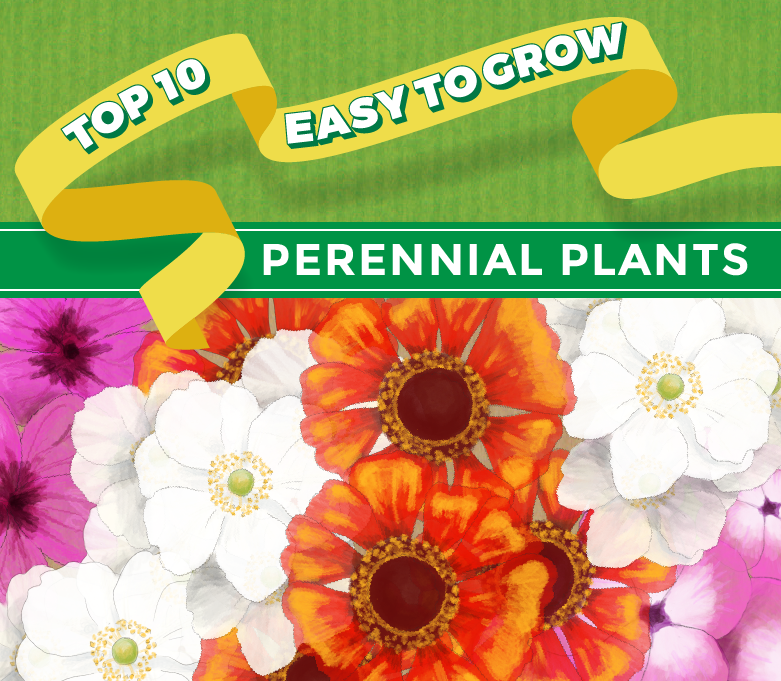
Perennial plants add colour and seasonal interest to the garden from April to November, often attracting bees and butterflies to their blooms, and making great cut flowers too.
Perennials are easy to grow, and incredibly versatile. They can be used as fillers between shrubs, groundcover beneath trees, grown in containers or planted on their own to create a classic herbaceous border, providing an easy alternative to annual flowers, returning each year and growing larger as they mature.
There are plenty of perennial plants to choose from but for some inspiration, take a look at our infographic of our top ten perennial plants for an easy and reliable display.
Lavender
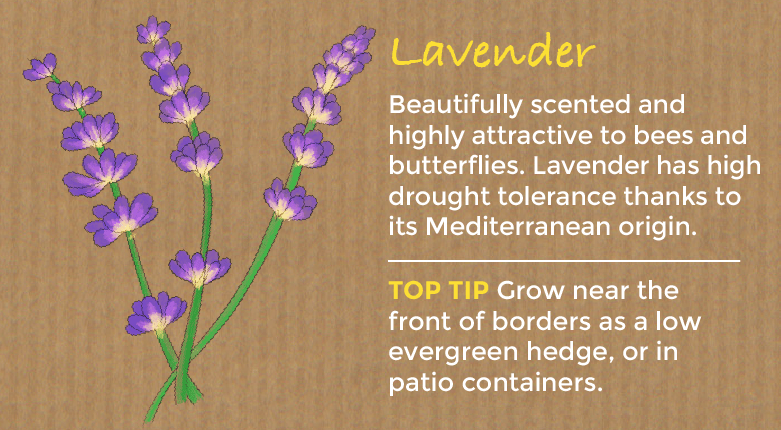
Although technically a shrub, we have to mention Lavender as one of our top perennial plants! Well-loved for its fragrant summer flowers and scented silver-green foliage this hardy, evergreen shrub is so versatile, for edging, hedging, borders and containers. The flowers are highly attractive to bees and butterflies have good drought tolerance, coping well with light, sandy soils. They also make superb cut flowers or even cake flavouring and decoration!
Sedum
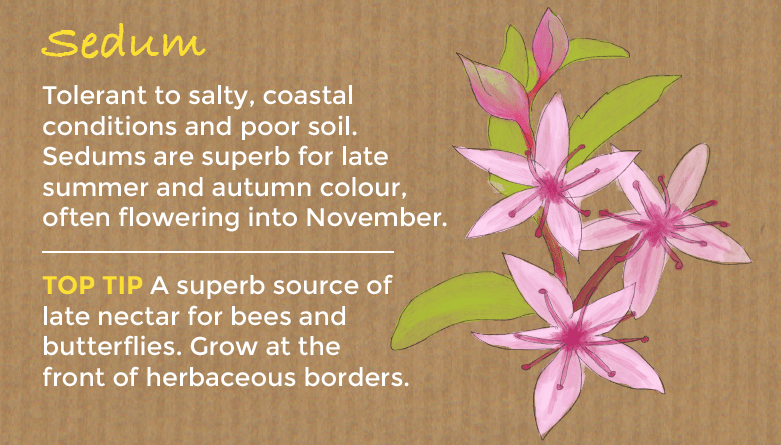
Sedums, also known as Stonecrop, are superb for their late summer and autumn colour, often flowering into November! With fantastic tolerance to poor conditions, Sedums are one of the easiest plants to grow in the garden. For a perennial border, choose Sedum spectabile (Ice Plant) which has a neat, upright growth habit and succulent, grey-green leaves. Tiny star-shaped, normally pink flowers are borne in dense, flat, cymes from August through to late autumn. Lleave the faded flower heads intact for winter interest.
Rudbeckia
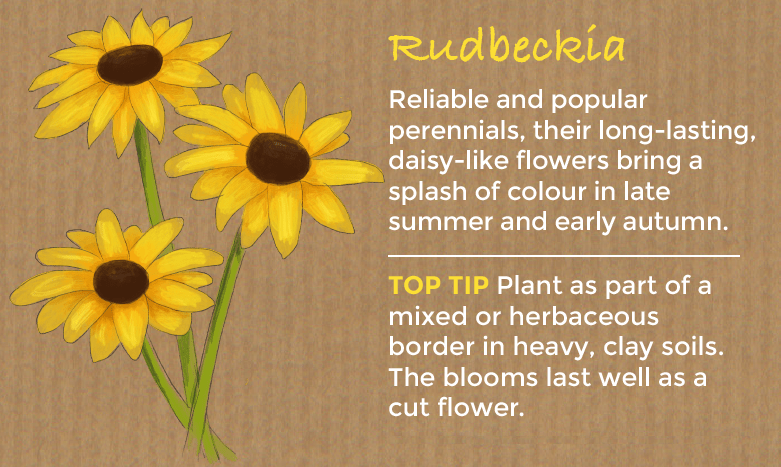
Rudbeckia are reliable and popular perennials, valued for their long-lasting, splash of colour in late summer and early autumn. Sunny yellow, red or orange petals surround prominent conical centres of green, brown or black which are attractive to bees and other pollinating insects. The neat, bushy upright growth of Rudbeckia fulgida fits in nicely among other perennial plants. Rudbeckia hirta are short-lived perennials and are often treated as biennials. Plant Rudbeckia as part of a mixed or herbaceous border, or alongside ornamental grasses for a prairie-style look.
Geranium
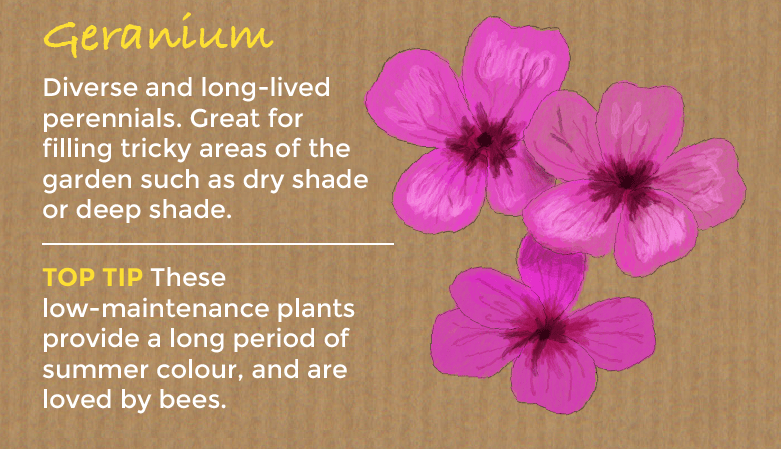
Hardy Geraniums, also known as Cranesbill, are a diverse group of plants and are some of the most tolerant and long-lived perennials you could grow. These low-maintenance perennials provide colour over a long period in the summer with white, pink, purple or blue flowers. Growth habits range from trailing or spreading, to taller, clump-forming varieties. Grow Geraniums as ground cover, edging or to fill gaps in borders.
Salvia nemorosa
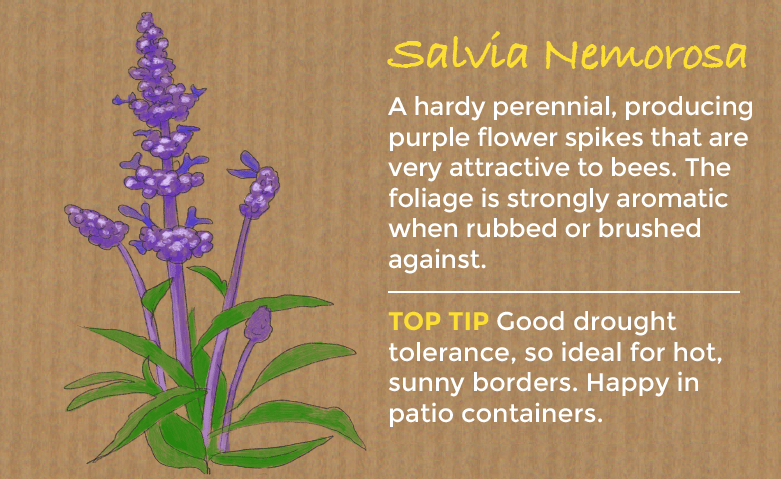
A hardy perennial, Salvia nemorosa is a prolific flowering plant producing purple flower spikes in abundance from summer to autumn, giving a long season of interest. Originating from hot, dry areas Salvia plants are superb for hot and sunny borders, and have good drought tolerance once established. A wonderful upright accent, Salvia works well as part of a mixed border or grown with grasses.
Phlox
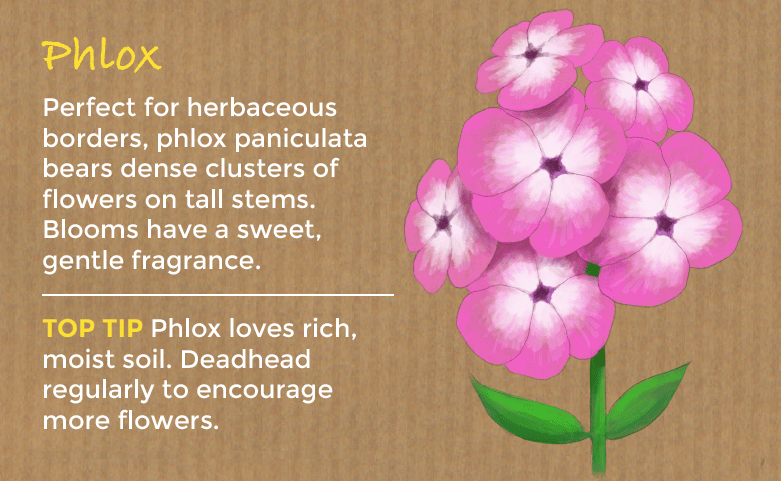
Phlox is a diverse genus of plants, the perennial species of which are popular for their bright, showy, and often highly fragrant flowers which are produced from late spring through to autumn. Phlox flowers are mainly pink, purple or white and some plants have variegated foliage which adds further interest to the garden. For ground cover or rockeries try growing Phlox subulata (Moss Phlox), a dense, evergreen perennial producing a mass of flowers.
Helenium
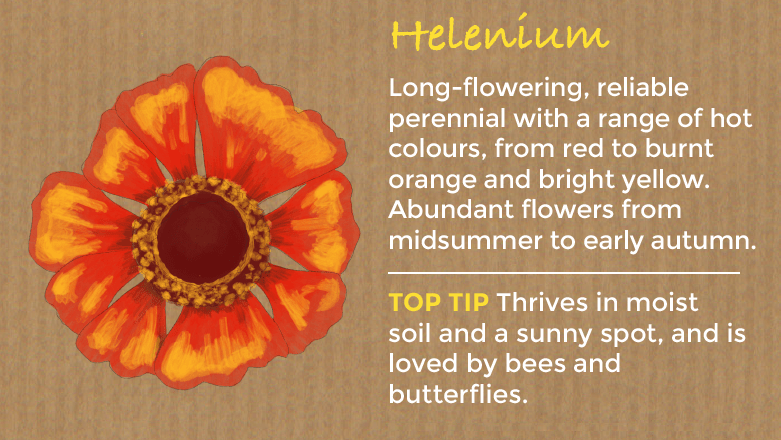
Also known as Helen's Flower, Heleniums are long-flowering, reliable perennial plants. With a range of hot colours from red to burnt orange and bright yellow, these fiery plants work well as part of a late summer border. The elegant flowers are borne in abundance from midsummer to early autumn on bushy, upright growth, with protruding central florets surrounded by a 'skirt' of petals. Grow Heleniums as a lively addition to herbaceous borders or try planting them with ornamental grasses for a prairie-style look. Heleniums make a great cut flower too.
Dianthus
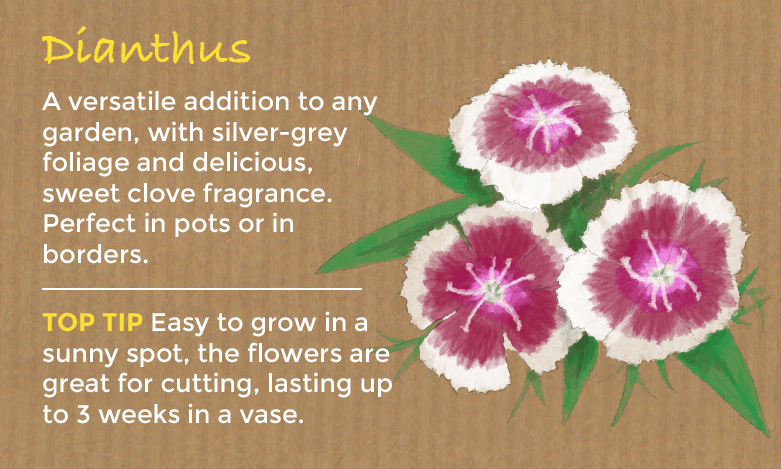
From large border carnations to dainty pinks, Dianthus plants are a versatile addition to the gardens. Dianthus plants are a perfect addition to cottage gardens. Grow alpine pinks such as Dianthus deltoides in a rock garden, raised bed, in patio containers or as ground cover. These tough little perennials cope well with windy and salty coastal conditions. Grow the larger pinks and carnations in beds, borders and patio containers. Dianthus flowers are also brilliant for cutting.
Japanese Anemone
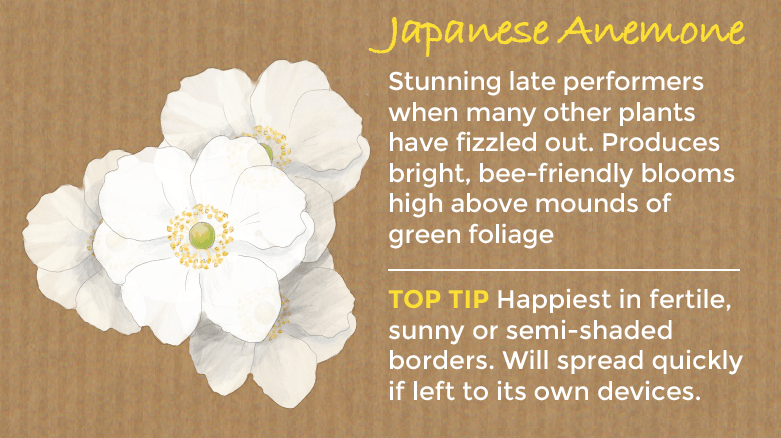
Japanese Anemones (Anemone x hybrida) are stunning performers in late summer and autumn when many other plants have fizzled out. Masses of large, bright, simple blooms are produced on elegant branching stems high above mounds of green, palmate foliage. Growing up to 1.5m tall, they are superb for adding height to the back of borders, although more compact varieties are available to suit any planting scheme. Japanese Anemones work well as part of a cottage garden theme, or grown in woodland gardens.
Penstemon
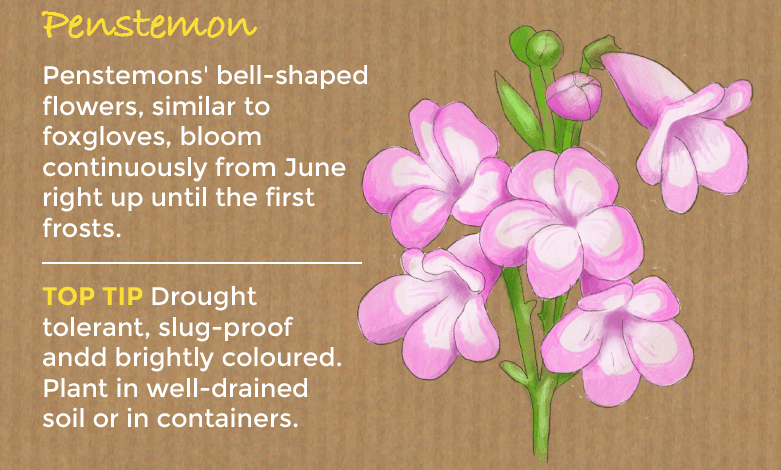
A valuable addition to summer borders, Penstemons are smothered in tubular-bell-shaped flowers, similar in appearance to foxgloves, and come in a range of bright colours and patterns. Bees love these easy-to-grow perennials, which look fabulous planted in groups where they knit together to form sheets of colour. Plant tall Penstemons in the middle of mixed or herbaceous borders, to lend an informal cottage-garden feel to the planting; or grow the dwarf varieties at border fronts or in patio containers.
Here's the infographic in full - if you'd like to share it or use it on your own site, check out the details underneath.

Share this infographic on social media - or, if you want to embed it on your own web page, just use the code in the box below:
For more information on growing and caring for perennials, head over to our perennial hub page.
What Do You Call Flowers That Come Back Every Year
Source: https://www.thompson-morgan.com/top-10-perennial-plants
0 Response to "What Do You Call Flowers That Come Back Every Year"
Post a Comment